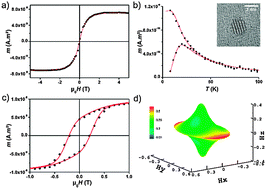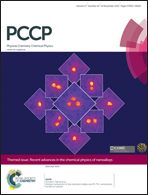Intrinsic magnetic properties of bimetallic nanoparticles elaborated by cluster beam deposition
Abstract
In this paper, we present some specific chemical and magnetic order obtained very recently on characteristic bimetallic nanoalloys prepared by mass-selected Low Energy Cluster Beam Deposition (LECBD). We study how the competition between d-atom hybridization, complex structure, morphology and chemical affinity affects their intrinsic magnetic properties at the nanoscale. The structural and magnetic properties of these nanoalloys were investigated using various experimental techniques that include High Resolution Transmission Electron Microscopy (HRTEM), Superconducting Quantum Interference Device (SQUID) magnetometry, as well as synchrotron techniques such as Extended X-ray Absorption Fine Structure (EXAFS) and X-ray Magnetic Circular Dichroism (XMCD). Depending on the chemical nature of the nanoalloys we observe different magnetic responses compared to their bulk counterparts. In particular, we show how specific relaxation in nanoalloys impacts their magnetic anisotropy; and how finite size effects (size reduction) inversely enhance their magnetic moment.

- This article is part of the themed collection: Recent advances in the chemical physics of nanoalloys

 Please wait while we load your content...
Please wait while we load your content...